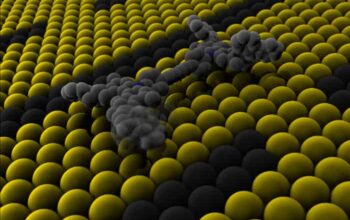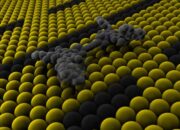In the realm of computational science, we are tantalizingly perched at the intersection of two revolutionary paradigms: quantum computing and neural networks. Each possesses unparalleled capabilities that promise to redefine our understanding of computational limits. Yet, an intriguing question emerges: which technology reigns supreme in advancing machine intelligence? To explore this, we must delve into the nuances of both quantum computing and neural networks, illuminating their strengths and weaknesses in the contemporary landscape of artificial intelligence.
First, let us dissect the enigmatic world of quantum computing. This avant-garde technology harnesses the principles of quantum mechanics, specifically the peculiar behaviors of particles at subatomic scales. The quintessential building block of traditional computing, the bit, is replaced by the quantum bit—or qubit. This revolutionary unit of information thrives in superposition, allowing it to exist in multiple states simultaneously. Such a property enables quantum computers to process vast amounts of data in parallel, eclipsing the capabilities of classical systems.
Nevertheless, the scalability of quantum computers remains an impediment. The intricacies of quantum entanglement and decoherence bring forth a cavalcade of challenges, notably in error correction and maintaining coherence over extended periods. Consequently, the practical deployment of quantum computing is still in its adolescence. As researchers grapple with these hurdles, they conjure up tantalizing applications, particularly in optimization problems, cryptography, and simulations of molecular interactions—areas where conventional systems find themselves confounded.
Conversely, neural networks stand as a formidable contender in the arena of artificial intelligence. These mathematical models, designed to emulate the human brain’s synaptic connections, learn from vast datasets through a series of layers that adjust weights and biases during training. This structure enables neural networks to perform complex tasks such as image recognition, natural language processing, and even generative tasks that mimic human creativity.
One of the most alluring aspects of neural networks is their ability to improve progressively with the accumulation of data. As the adage goes, “the more, the merrier,” and in this case, additional data enhances a network’s precision and performance. However, despite neural networks’ impressive capabilities, they are not without limitations. Issues such as overfitting, lack of interpretability, and dependency on large datasets hinder their effectiveness in certain scenarios. Moreover, their often-opaque decision-making processes raise questions about accountability and ethical implications, particularly in critical applications like healthcare and criminal justice.
Now, a question arises: can these two distinct paradigms coexist or even converge? The intersection of quantum computing and neural networks presents a fertile ground for innovation. Quantum machine learning, an emerging field, explores the synergy between quantum mechanics and traditional machine learning techniques. Researchers postulate that quantum computing could significantly enhance neural networks by expediting the training process and tackling complexities that presently obfuscate classical approaches.
For instance, quantum algorithms may address the widespread issue of local minima encountered in neural network optimization. Classical systems often become ensnared in these local optima, plaguing their performance. However, quantum techniques harness the principles of superposition and entanglement, potentially allowing for the exploration of the solution space more comprehensively. This could lead to models that are not only faster but also yield higher accuracy in their predictions.
Yet, this interplay is not devoid of challenges. One must ponder whether the integration of quantum computing into neural networks necessitates a fundamental rethinking of the architecture and training paradigms that have long been established. Furthermore, what implications would such a convergence have on computational efficiency and resource allocation? It is essential to question whether the cognitive and operational paradigms that currently govern neural networks are robust enough to integrate the paradigms posed by quantum mechanics.
As we navigate through this intellectual labyrinth, ethical considerations loom large. The fusion of quantum computing and artificial intelligence could potentially exacerbate existing biases if not conceived with a judicious approach. For example, flawed datasets, amplified through quantum-enhanced learning, may lead to catastrophic errors in critical applications. Henceforth, it becomes imperative that as we stride towards this futuristic horizon, we enshrine ethical frameworks and governance to oversee the burgeoning landscape.
In conclusion, while the question of whether quantum computing or neural networks is ‘superior’ invites a playful debate, it simultaneously beckons a deeper inquiry into their potential collaboration. Each technology harbors strengths that can complement the other, paving the way for a new paradigm in computational intelligence. As we stand on the cusp of unprecedented possibilities, we must embrace a conservative optimism, fostering a culture of interdisciplinary collaboration. Only then can we forge pathways that harness the full array of possibilities offered by both quantum mechanics and artificial intelligence—an odyssey that promises to reshape our digital future.










